A Conversation With Sean Durkin (MARTHA MARCY MAY MARLENE)
Hammer to Nail contributor John Magary had this to say about Sean Durkin’s debut feature Martha Marcy May Marlene in conjunction with its recent screenings at the 2011 New York Film Festival:
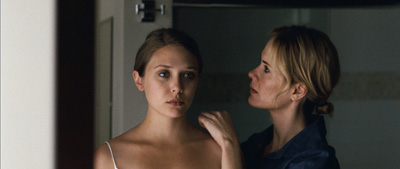 A throbbing flip-flopper of a movie, weaving an always-past present into an always-present past, Martha Marcy May Marlene tosses and turns around its thrice-titular lead, played by Elizabeth Olsen with unsettling ease. Martha, having escaped from a cult in the Catskills (where she was Marcy May when she wasn’t Marlene), drops a dime and, cold turkey, re-enters society, portrayed here as something like the general population of a family penitentiary. Martha’s sister and brother-in-law (Sarah Paulson and Hugh Dancy), accepting their runaway like a dog accepts fleas, express dismay at Martha’s erratic night terrors, spontaneous skinny-dipping, and loopy resistance to living in a non-collective. Throughout, first-time writer-director Sean Durkin, in perfect sync with editor Zachary Stuart-Pontier and cinematographer Jody Lee Lipes, pulls trigger after trigger from Martha’s past: her sly renaming to Marcy May, nudged like a come on; her blithe forfeitures of autonomy; her drug-dulled initiation with the cult’s leader, played by John Hawkes as a skeletal (though not entirely unbecoming) alliance of Manson and Thoreau. Cult episodes drop in like cold water, then like mirror shards, and by the last act they’ve gained so much reflective momentum that their past-ness simply dissolves. What sounds in outline like a Movie of the Week—charismatic guru, hot orgies, sibling rivalry—transforms under the guidance of Sean Durkin into something forceful and astoundingly fluid, an eerie melding of then and now, paranoia and truth. Highly geometric yet de-centered, dense to the point of suffocation, fleet and juicy, darn near seamless in its transitions, Martha Marcy May Marlene is a consuming workout.
A throbbing flip-flopper of a movie, weaving an always-past present into an always-present past, Martha Marcy May Marlene tosses and turns around its thrice-titular lead, played by Elizabeth Olsen with unsettling ease. Martha, having escaped from a cult in the Catskills (where she was Marcy May when she wasn’t Marlene), drops a dime and, cold turkey, re-enters society, portrayed here as something like the general population of a family penitentiary. Martha’s sister and brother-in-law (Sarah Paulson and Hugh Dancy), accepting their runaway like a dog accepts fleas, express dismay at Martha’s erratic night terrors, spontaneous skinny-dipping, and loopy resistance to living in a non-collective. Throughout, first-time writer-director Sean Durkin, in perfect sync with editor Zachary Stuart-Pontier and cinematographer Jody Lee Lipes, pulls trigger after trigger from Martha’s past: her sly renaming to Marcy May, nudged like a come on; her blithe forfeitures of autonomy; her drug-dulled initiation with the cult’s leader, played by John Hawkes as a skeletal (though not entirely unbecoming) alliance of Manson and Thoreau. Cult episodes drop in like cold water, then like mirror shards, and by the last act they’ve gained so much reflective momentum that their past-ness simply dissolves. What sounds in outline like a Movie of the Week—charismatic guru, hot orgies, sibling rivalry—transforms under the guidance of Sean Durkin into something forceful and astoundingly fluid, an eerie melding of then and now, paranoia and truth. Highly geometric yet de-centered, dense to the point of suffocation, fleet and juicy, darn near seamless in its transitions, Martha Marcy May Marlene is a consuming workout.
Just before the film’s theatrical release on Friday, October 21, 2011 thanks to distributor Fox Searchlight, I talked on the phone with Durkin about how he brought his ambitious, unsettling vision to life.
Sean Durkin: I’m in Belgium at the Ghent Film Festival. It’s pretty cool. I got in this morning and I’m here for a day before going to London. I just walked around. There’s a bunch of kids sitting in front of my hotel with dreadlocks and dogs and they’re listening to French hip-hop.
Hammer to Nail: Are they your target audience?
SD: I think they might be. I’m gonna go out and hand out postcards to them and see if they’ll come tonight. [both laugh]
H2N: You don’t have to get into budgetary specifics if you don’t want to, but I remember hearing there was a point—I think this was around the time you were at the Sundance director’s lab—when you had an initial chunk of money and there was that question if you held out for more or if you plunged forward with what you had committed. How did that play out?
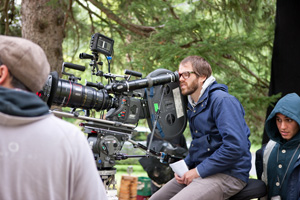 SD: What happened was when I left the writer’s lab in January, it was an amazing process, but it definitely takes you to a point where there’s a lot to consider. I had to go back and rewrite and then just had all these questions and it was in a bit of shambles. It took about four months to really get back on my feet, and when I did the draft was much, much stronger, but it was a long process. So, when we were at Director’s Fortnight with Mary Last Seen, and it won the prize there, there was a guy there who had worked with us and was interested in investing. He committed a pretty good portion of the budget that night. That was the first money in. He said he wanted to do it. So, we had enough to get started, and that was a week before I went to the director’s lab. I went to the director’s lab not knowing if I would come out of that lab the same way I came out of the writer’s lab in January. I couldn’t really say how I’d be feeling, if I’d be able to just turn around and make a movie right away. I was there for four weeks and by the time the third week came around I was feeling pretty good and I called home to Josh [Mond, producer] and Tony [Antonio Campos, producer] and told them that I think we should go ahead and move forward. They’d already been doing some work in preparation for that so that was good. And then we just decided to go. Once I got home at the end of June I spent July rewriting, started prepping in August, and shot end of August to end of September.
SD: What happened was when I left the writer’s lab in January, it was an amazing process, but it definitely takes you to a point where there’s a lot to consider. I had to go back and rewrite and then just had all these questions and it was in a bit of shambles. It took about four months to really get back on my feet, and when I did the draft was much, much stronger, but it was a long process. So, when we were at Director’s Fortnight with Mary Last Seen, and it won the prize there, there was a guy there who had worked with us and was interested in investing. He committed a pretty good portion of the budget that night. That was the first money in. He said he wanted to do it. So, we had enough to get started, and that was a week before I went to the director’s lab. I went to the director’s lab not knowing if I would come out of that lab the same way I came out of the writer’s lab in January. I couldn’t really say how I’d be feeling, if I’d be able to just turn around and make a movie right away. I was there for four weeks and by the time the third week came around I was feeling pretty good and I called home to Josh [Mond, producer] and Tony [Antonio Campos, producer] and told them that I think we should go ahead and move forward. They’d already been doing some work in preparation for that so that was good. And then we just decided to go. Once I got home at the end of June I spent July rewriting, started prepping in August, and shot end of August to end of September.
H2N: With regards to casting, was Elizabeth Olsen in place early on or were you scrambling to cast this vital role relatively late in the game?
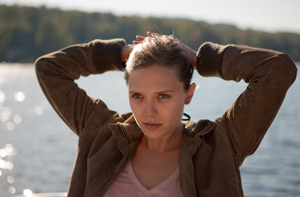 SD: I didn’t know she existed until she walked in the room. We have this history of making movies with blind faith and it’s worked out. It’s scary but you just have to assume that it’s gonna work out. I wanted an unknown actress. I thought it was really important for this role. The casting director Susan Shopmaker just brought in every girl. Everybody else was pretty much handpicked. A couple people I knew, like I knew Louisa [Krause] and Brady [Corbet] obviously, but Susan pretty much handpicked the rest. Martha was the one we were auditioning, which was the scariest because without the right person in that role the movie wouldn’t be the same thing. Yeah, so it was just blind faith. [SD laughs]
SD: I didn’t know she existed until she walked in the room. We have this history of making movies with blind faith and it’s worked out. It’s scary but you just have to assume that it’s gonna work out. I wanted an unknown actress. I thought it was really important for this role. The casting director Susan Shopmaker just brought in every girl. Everybody else was pretty much handpicked. A couple people I knew, like I knew Louisa [Krause] and Brady [Corbet] obviously, but Susan pretty much handpicked the rest. Martha was the one we were auditioning, which was the scariest because without the right person in that role the movie wouldn’t be the same thing. Yeah, so it was just blind faith. [SD laughs]
H2N: How soon before production was it that you locked in with her? Like a month or a week?
SD: It was about two or three weeks.
H2N: Wow.
SD: Yeah.
H2N: You isolated yourselves in the way of being on location and making this production become its own commune. How much time before the first day of shooting did that happen?
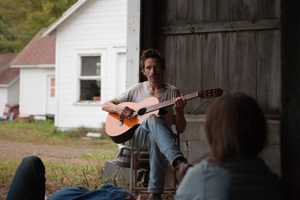 SD: We went out there two weeks before we started shooting, Jody, Josh, Tony and I moved up there to the farm, with some other production people. Jody and I would spend the day walking around the farm and talking and just getting used to it. And then when everyone else came we stayed at the motel down at the corner. We had some time to settle in, but you know, it’s never enough time to prep. [SD laughs] It was definitely hard. But it kind of worked because I had always storyboarded everything and been really diligent about that. For this, we walked through and we made a plan, but I really wanted it to be about the acting first. I really wanted to keep things open so that nothing was really too planned until we were able to get in there and block it. We didn’t have any rehearsal days, so that meant the day of. So Jody tried to light all the spaces just as the spaces so that the bulk of the work was done, and then there would be tweaking based on the blocking in the room. It worked for me to do it that way.
SD: We went out there two weeks before we started shooting, Jody, Josh, Tony and I moved up there to the farm, with some other production people. Jody and I would spend the day walking around the farm and talking and just getting used to it. And then when everyone else came we stayed at the motel down at the corner. We had some time to settle in, but you know, it’s never enough time to prep. [SD laughs] It was definitely hard. But it kind of worked because I had always storyboarded everything and been really diligent about that. For this, we walked through and we made a plan, but I really wanted it to be about the acting first. I really wanted to keep things open so that nothing was really too planned until we were able to get in there and block it. We didn’t have any rehearsal days, so that meant the day of. So Jody tried to light all the spaces just as the spaces so that the bulk of the work was done, and then there would be tweaking based on the blocking in the room. It worked for me to do it that way.
H2N: So that was the first time you let go of that hyper-orchestrated approach to pre-production?
SD: Yeah. When I made shorts, everything was thoroughly storyboarded and shot-listed. When I started making films I was coming from a place of photography. It was all about creating the image. And then, as I made and worked on films over the years it’s become all about the acting and realizing that the image is also about the acting at the core. I don’t know, it’s interesting. So that was really the focus. But it’s not like we didn’t have a plan. We did. We always had a plan but we were always open to adjusting it. A lot of times we’d get there and I’d suggest something and we’d do it, or Jody would suggest something better and we’d do it. It was a really great relationship between us—really open and communicative. We were on the same page all the time.
H2N: I was going to ask you about that but you just answered it! Even with that openness, was there anything that you had envisioned in the script stage that you felt was important to carry into the execution?
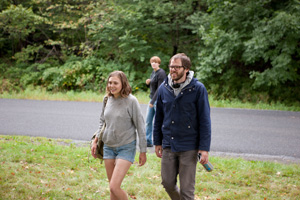 SD: Yeah, there’s lots. It’s a combination. Like, the party shot we made up that morning, which is one of my favorite shots in the film. But then there are transitions that actually were storyboarded, like the first transition where she’s sitting at the lake and then she’s back at the farm and she stands up and she’s back at the lake before she jumps in after taking her clothes off. That was all very clearly storyboarded and laid out in the script. And then the moment where she takes the drink and she’s got the water, then she walks in and takes the drink to the girl at the farm. Those key moments. And the opening sequence where she leaves the house very quietly and runs into the woods. That was also clearly designed from very early in the writing process. So it was definitely a combination. It’s not quite as freeform as it sounds, but there was always a flexibility.
SD: Yeah, there’s lots. It’s a combination. Like, the party shot we made up that morning, which is one of my favorite shots in the film. But then there are transitions that actually were storyboarded, like the first transition where she’s sitting at the lake and then she’s back at the farm and she stands up and she’s back at the lake before she jumps in after taking her clothes off. That was all very clearly storyboarded and laid out in the script. And then the moment where she takes the drink and she’s got the water, then she walks in and takes the drink to the girl at the farm. Those key moments. And the opening sequence where she leaves the house very quietly and runs into the woods. That was also clearly designed from very early in the writing process. So it was definitely a combination. It’s not quite as freeform as it sounds, but there was always a flexibility.
H2N: It’s funny you mentioning those transitions. I think this film is firing on all cylinders, but I’m a really big skeptic when it comes to flashbacks and flashforwards in movies. On the page, fine, but on screen, it almost always ruins whatever suspension of disbelief that had been established.
SD: I hate flashbacks. [both laugh]
H2N: They’re just so hard. But here, it’s a vital component of what you’re trying to do. As someone who confesses to hating flashbacks, I’m wondering if you can try to break down what you did differently to make it actually work?
SD: I really dislike flashbacks. I can’t think of any movie offhand I enjoy that has them. [H2N laughs] Which is funny because when I started writing this, I never considered that these were flashbacks.
H2N: That’s telling right there.
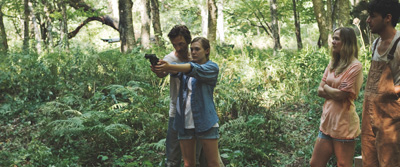 SD: Where the idea came from was that I met someone who shared her story with me. It’s not the story that’s in the movie, but it’s the tactics and the emotional fallout—the psychology, the fear, the paranoia—all of those things that she shared became really central to the film. She told me about the first couple weeks after she left, that she was in a constant state of paranoia. She lied to everyone about who she was and where she had been. She was just existing in this state of fear and doesn’t remember anything all at the same time. So it was a really crazy description of this time. And I thought that mixing that with a couple aspects of the cult life. One being a really common thing that I heard across the board was that none of these groups had clocks or calendars. So there’s a complete loss of time. And then in addition, there’s a little bit of Buddhist philosophy that creeps in there through Patrick [Hawkes]. In some earlier drafts, there was a little bit more of it, and I just felt that was a natural thing to add to the kind of life they were leading. There was a speech someone gave that I was working on that didn’t make the movie, but basically it was the idea that nothing happens in the past and nothing happens in the future. Everything happens in the present. And if that was a part of the rhetoric, then a combination of those things would create this state of mind where there was no past, there was no future, there’s only present. There’s a complete lack of understanding of time and space. With the confusion and the paranoia, it all leads into this blurred reality that Martha’s experiencing. She’s trying to figure it all out at the same time.
SD: Where the idea came from was that I met someone who shared her story with me. It’s not the story that’s in the movie, but it’s the tactics and the emotional fallout—the psychology, the fear, the paranoia—all of those things that she shared became really central to the film. She told me about the first couple weeks after she left, that she was in a constant state of paranoia. She lied to everyone about who she was and where she had been. She was just existing in this state of fear and doesn’t remember anything all at the same time. So it was a really crazy description of this time. And I thought that mixing that with a couple aspects of the cult life. One being a really common thing that I heard across the board was that none of these groups had clocks or calendars. So there’s a complete loss of time. And then in addition, there’s a little bit of Buddhist philosophy that creeps in there through Patrick [Hawkes]. In some earlier drafts, there was a little bit more of it, and I just felt that was a natural thing to add to the kind of life they were leading. There was a speech someone gave that I was working on that didn’t make the movie, but basically it was the idea that nothing happens in the past and nothing happens in the future. Everything happens in the present. And if that was a part of the rhetoric, then a combination of those things would create this state of mind where there was no past, there was no future, there’s only present. There’s a complete lack of understanding of time and space. With the confusion and the paranoia, it all leads into this blurred reality that Martha’s experiencing. She’s trying to figure it all out at the same time.
H2N: And so how do you translate that technically into the storytelling itself? Is it simply directing without thinking about these flashbacks as flashbacks?
SD: Exactly. Everything was just in the moment. I always tried to avoid thinking about that. Even in the script, it’s like, “Okay, she’s at the lake,” and there’s a transition back and she’s at the farm and we’re doing a scene at the farm. Traditionally, the actor would want to say, “Where am I coming from at the lake?” I tried to even stay away from that to a certain extent. I mean, at some level you have to understand it. But really the focus is just to create each moment individually in the present for what it was without considering it as any sort of flashback, because that just wasn’t helpful.
H2N: Did the film change a lot from the shooting script in the editing room, in the sense of pacing or the placement of transitions?
SD: It changes. The script sets the tone and the style, and then we execute certain things. Then, you know, you lose scenes while you’re shooting and create new things. And then you cut scenes in editing and have lucky cuts. [H2N laughs] You cut a scene and then all of a sudden you have a transition you didn’t know was there. Or you look for it. You look for some sort of match. So it’s a combination of all things, but it really was specific in the script.
H2N: Wrapping up, you’re on the precipice of opening. Already, this has been a pretty incredible ride for you. Are you putting any pressure on yourself at this point? [SD laughs] Personally, I think the only healthy way to approach it is to be happy and realize that it’s out of your hands.
SD: I feel the same way. It’s hard to fully feel that, but I am of that mindset. I mean, already what the film’s gone through, how we made it and where it’s gone in the last year has been amazing. So I’m just really thankful and appreciative. I’m really excited for it to come out finally and see what happens. But you’re right, there’s nothing more I can do about it. I mean, I’m doing all the press and touring with it as much as I can to help. That’s all I can do.
H2N: And handing out flyers to dreadlocked Belgian kids with dogs.
— Michael Tully








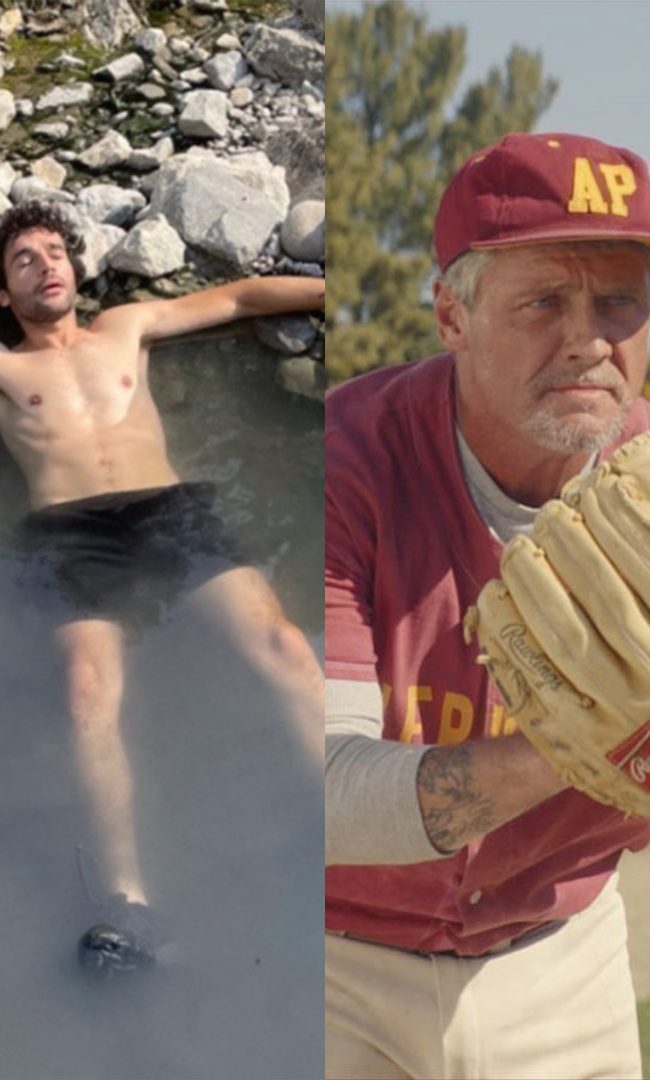
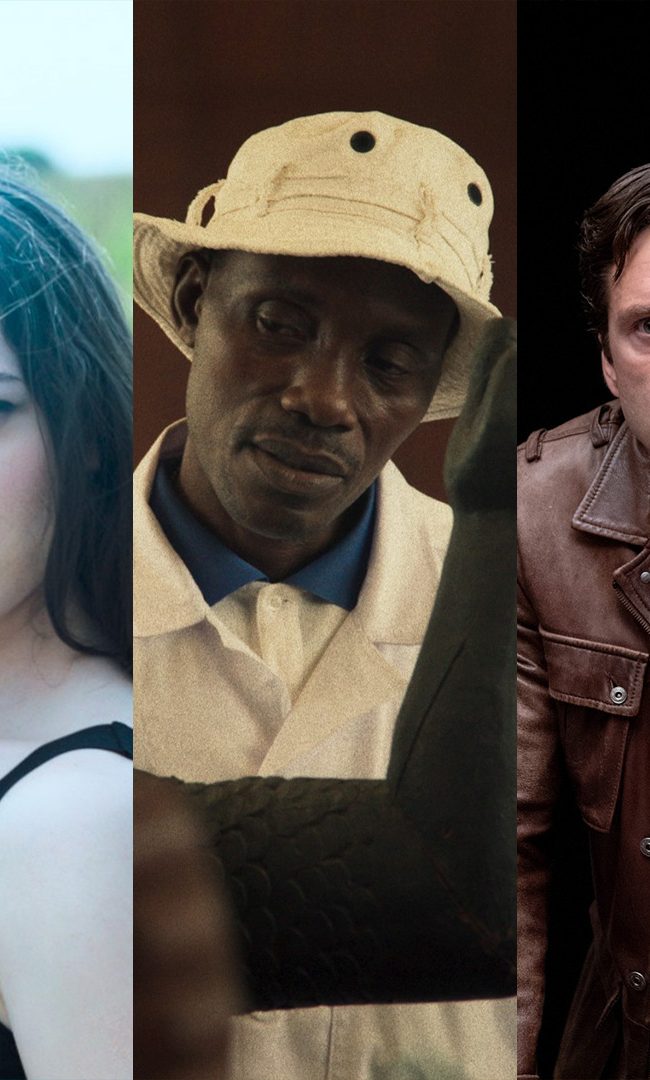


Chimneysmokeree
Is Michael Tully only one who writes for this site anymore? What happened to Lena Dunham? You would think she would want to shine a light on Hammer To Nail now that she is celeb. I guess she is not cool like that.
Tully
Dear Chimneysmokeree,
Ever since Hollywood came a knocking, Ms. Dunham refuses to answer our calls. At one point, her assistant answered and spat through the phone, causing a dribble to land on my chin. That is what happens to these too-much-too-soon success stories. Last I heard, she was eating crack brownies on the beach with Colin Farrell and Seth Rogen. Fortunately, we have a stable of fresh writers—Michael Nordine, Paul Sbrizzi, as well as old vets like Brandon Harris, Nelson Kim, Tom Hall, and Cullen Gallagher—to try to prevent the site from becoming too yours-truly heavy. Thank you for your concern. — Tully
Tully
Also, for a sharp female perspective we have the likes of Susanna Locascio, Alexandra Roxo, and Pamela Cohn to keep the testosterone levels down.
Pingback: HOME VIDEO PICKS – Hammer to Nail
Pingback: THE 2011 HAMMER TO NAIL AWARDS – Hammer to Nail